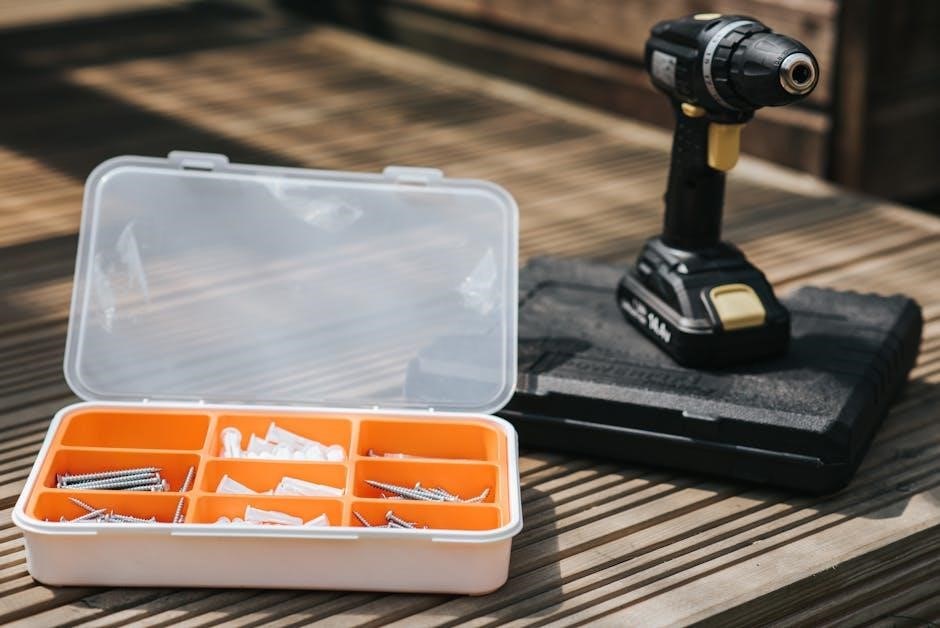The transfer case manual provides information on installation and maintenance procedures for various transfer case models, including manual and automatic types, to ensure proper functioning and longevity of the vehicle’s four-wheel drive system always.
Definition and Purpose
The transfer case is a crucial component of a vehicle’s four-wheel drive system, and the transfer case manual is a comprehensive guide that provides detailed information on its definition and purpose. The transfer case is defined as a gearbox that transfers power from the transmission to the front and rear axles, enabling the vehicle to switch between two-wheel and four-wheel drive modes. The purpose of the transfer case is to provide a reliable and efficient means of distributing power to all four wheels, thereby enhancing the vehicle’s traction, stability, and control. The transfer case manual explains the importance of the transfer case in various driving conditions, including off-road driving, towing, and hauling heavy loads. By understanding the definition and purpose of the transfer case, vehicle owners can appreciate the significance of proper maintenance and repair procedures outlined in the transfer case manual. The manual also covers the different types of transfer cases available.

Types of Transfer Cases
Transfer cases include manual and automatic types with different shifting mechanisms always available online.
Manual Transfer Case with Manual Shift
The manual transfer case with manual shift is a type of transfer case that requires the driver to manually engage the four-wheel drive system using a floor-mounted shift lever. This type of transfer case is often preferred by drivers who want more control over their vehicle’s four-wheel drive system. The manual shift mechanism allows for a more direct and immediate engagement of the four-wheel drive system, which can be beneficial in certain driving situations. According to online sources, the manual transfer case with manual shift is also considered to be more durable and reliable than electronic transfer cases. Additionally, the manual shift mechanism can provide a faster engagement of the four-wheel drive system, which can be useful in situations where quick traction is needed. Overall, the manual transfer case with manual shift is a popular choice among drivers who want a more traditional and hands-on approach to engaging their vehicle’s four-wheel drive system.
Manual Transfer Case with Electric Shift
The manual transfer case with electric shift is a type of transfer case that combines the benefits of a manual transfer case with the convenience of electric shifting. This type of transfer case uses electric motors to engage and disengage the four-wheel drive system, but still requires the driver to manually select the desired gear range. According to online sources, the manual transfer case with electric shift is often confused with automatic transfer cases, but it is a distinct type of transfer case that offers a unique set of benefits. The electric shift mechanism allows for smooth and quiet operation, while the manual override feature provides the driver with more control over the four-wheel drive system. The manual transfer case with electric shift is a popular choice among drivers who want a balance of convenience and control. It is also considered to be a reliable and durable option, with a reputation for withstanding heavy use.

Comparison of Manual and Automatic Transfer Cases
Manual and automatic transfer cases have distinct differences in terms of operation and performance characteristics always and everywhere in the world today.
Differences in Reliability and Durability
The reliability and durability of manual and automatic transfer cases differ significantly, with manual transfer cases generally considered more reliable and durable due to their simpler design and fewer components.
Manual transfer cases have a reputation for being more durable and reliable than electronic ones, with some owners preferring the manual shift mechanism for its faster engagement and disengagement of four-wheel drive.
In contrast, automatic transfer cases rely on complex electronic systems and sensors to operate, which can be prone to faults and failures, particularly in harsh driving conditions.
Overall, the differences in reliability and durability between manual and automatic transfer cases are an important consideration for vehicle owners who require a robust and dependable four-wheel drive system, and the manual transfer case is often the preferred choice for its simplicity and reliability.
Differences in Maintenance and Repair

The maintenance and repair requirements for manual and automatic transfer cases vary, with manual transfer cases typically requiring less maintenance and being easier to repair.
Manual transfer cases have fewer components and no complex electronic systems, making them more accessible for DIY maintenance and repair, and reducing the need for specialized tools and expertise.
In contrast, automatic transfer cases require more frequent maintenance, including software updates and sensor calibration, and repairs can be more costly and time-consuming due to the complexity of the electronic systems.
Additionally, the use of specialized tools and diagnostic equipment may be necessary to repair automatic transfer cases, making it more difficult for vehicle owners to perform repairs themselves, and increasing the reliance on professional mechanics and repair services.
This can result in higher maintenance and repair costs over the life of the vehicle, making manual transfer cases a more attractive option for some owners.

Applications of Manual Transfer Cases
Manual transfer cases are used in various vehicles and applications requiring four-wheel drive capability always with specific needs.
On-Demand 4-Wheel Drive Service
The on-demand 4-wheel drive service is a feature that allows drivers to engage the four-wheel drive system as needed, providing improved traction and control in various driving conditions, including off-road and slippery surfaces. This feature is made possible by the transfer case, which distributes power to all four wheels. The transfer case is an essential component of the vehicle’s drivetrain, and its proper functioning is critical to the smooth operation of the on-demand 4-wheel drive service. With the manual transfer case, drivers can manually engage the four-wheel drive system, allowing for more control over the vehicle’s traction and stability. The on-demand 4-wheel drive service is particularly useful in situations where extra traction is needed, such as when driving on steep inclines or navigating rough terrain. By providing improved traction and control, the on-demand 4-wheel drive service enhances the overall driving experience and helps to ensure safe and reliable operation of the vehicle.
Modified 4×4 Vehicles
Modified 4×4 vehicles often require specialized transfer cases to handle the increased power and torque output of the engine. The manual transfer case is a popular choice for modified 4×4 vehicles, as it provides a more direct and efficient transfer of power to the wheels. With a manual transfer case, drivers can manually engage the four-wheel drive system, allowing for more control over the vehicle’s traction and stability. This is particularly useful in situations where the vehicle is being driven in extreme off-road conditions, such as rock crawling or mud bogging. The manual transfer case is also easier to modify and upgrade, making it a popular choice among enthusiasts who want to customize their vehicle’s drivetrain. Overall, the manual transfer case is a key component of many modified 4×4 vehicles, providing the power and control needed to tackle challenging off-road terrain. The transfer case manual provides guidance on installation and maintenance.

No Responses